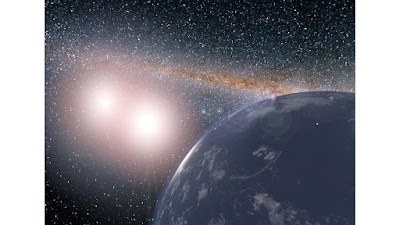Topics: Astronomy, Astrobiology, Astrophysics, Cosmology, Exoplanets
Out beyond our solar system, visible only as the smallest dot in space with even the most powerful telescopes, other worlds exist. Many of these worlds, astronomers have discovered, may be much larger than Earth and completely covered in water — basically ocean planets with no protruding land masses. What kind of life could develop on such a world? Could a habitat like this even support life?
A team of researchers led by Arizona State University (ASU) recently set out to investigate those questions. And since they couldn’t travel to distant exoplanets to take samples, they decided to recreate the conditions of those water worlds in the laboratory. In this case, that laboratory was the Advanced Photon Source (APS), a U.S. Department of Energy (DOE) Office of Science User Facility at the DOE’s Argonne National Laboratory.
What they found — recently published in Proceedings of the National Academy of Sciences — was a new transitional phase between silica and water, indicating that the boundary between water and rock on these exoplanets is not as solid as it is here on Earth. This pivotal discovery could change the way astronomers and astrophysicists have been modeling these exoplanets, and inform the way we think about life evolving on them.
Dan Shim, associate professor at ASU, led this new research. Shim leads ASU’s Lab for Earth and Planetary Materials and has long been fascinated by the geological and ecological makeup of these distant worlds. That composition, he said, is nothing like any planet in our solar system — these planets may have more than 50% water or ice atop their rock layers, and those rock layers would have to exist at very high temperatures and under crushing pressure.
Beneath the surface of our galaxy’s water worlds, Andre Salles, Argonne National Laboratory

Comments